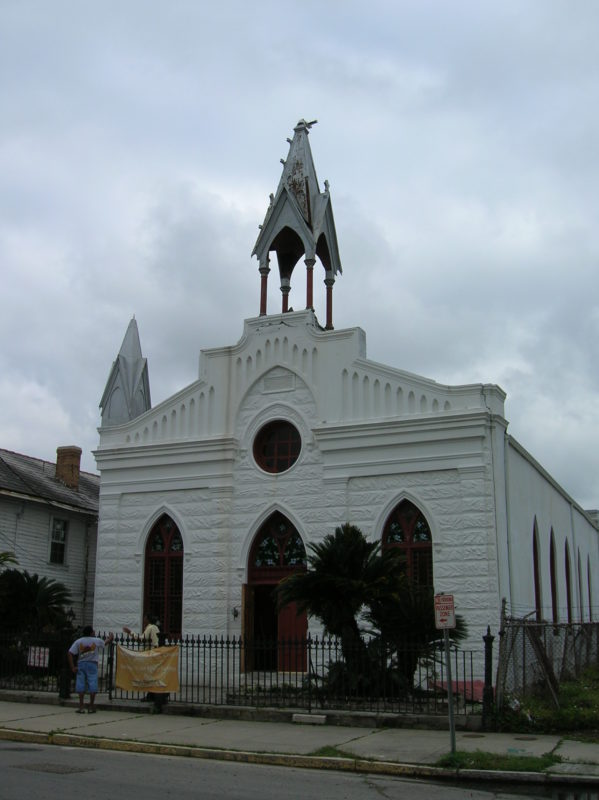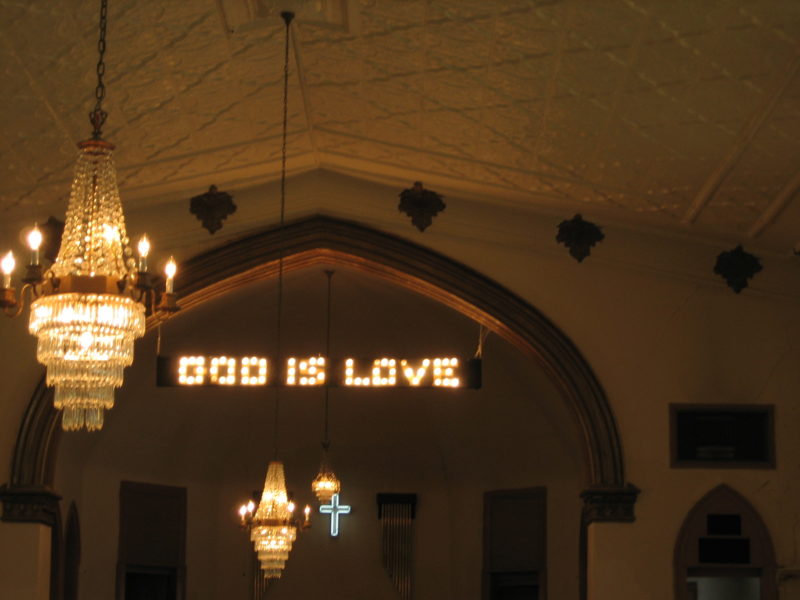
The exterior of the church. Photo by Bethany Rogers.
The St. James African Methodist Episcopal Church was established in 1844 in response to prejudicial treatment in a predominantly white church; the construction of the church on North Roman Street was completed in 1851. Remodeled in 1903, the church has a number of notable architectural features. These include a prominent bell tower, original arched stained glass windows, and a pressed tin ceiling. It is listed on the National Register of Historic Places. Pastor Otto Duncan and church members insist, however, that the most impressive feature of the church is the white light bulb sign that shines “GOD IS LOVE” above the pulpit.

The graceful lighting inside the church compliments it’s favorite sign. Photo by Bethany Rogers.
Throughout its history, St. James AME has actively promoted racial equality and social and political progress. Leading up to the Civil War, St. James AME was a place where free people of color could worship freely and, despite prohibitive legislation, slaves were often admitted. During the late 1800s and early 1900s, the church served as the organizational site for the Black Masons of Louisiana. In the early 1900s, the church secured the establishment of a black elementary school, the Bienville School, later renamed the Albert Wicker School. In the second half of the 20th century, the church was involved in the organization of the Black YMCA (later named the Dryades Street YMCA) and it served as a staging site for Civil Rights protests on Canal Street. St. James owns a number of properties adjacent to the church, and part of their post-Katrina mission is to provide affordable housing to neighborhood residents in need. The church also continues to support the Albert Wicker School located a few blocks away on Bienville Street.





